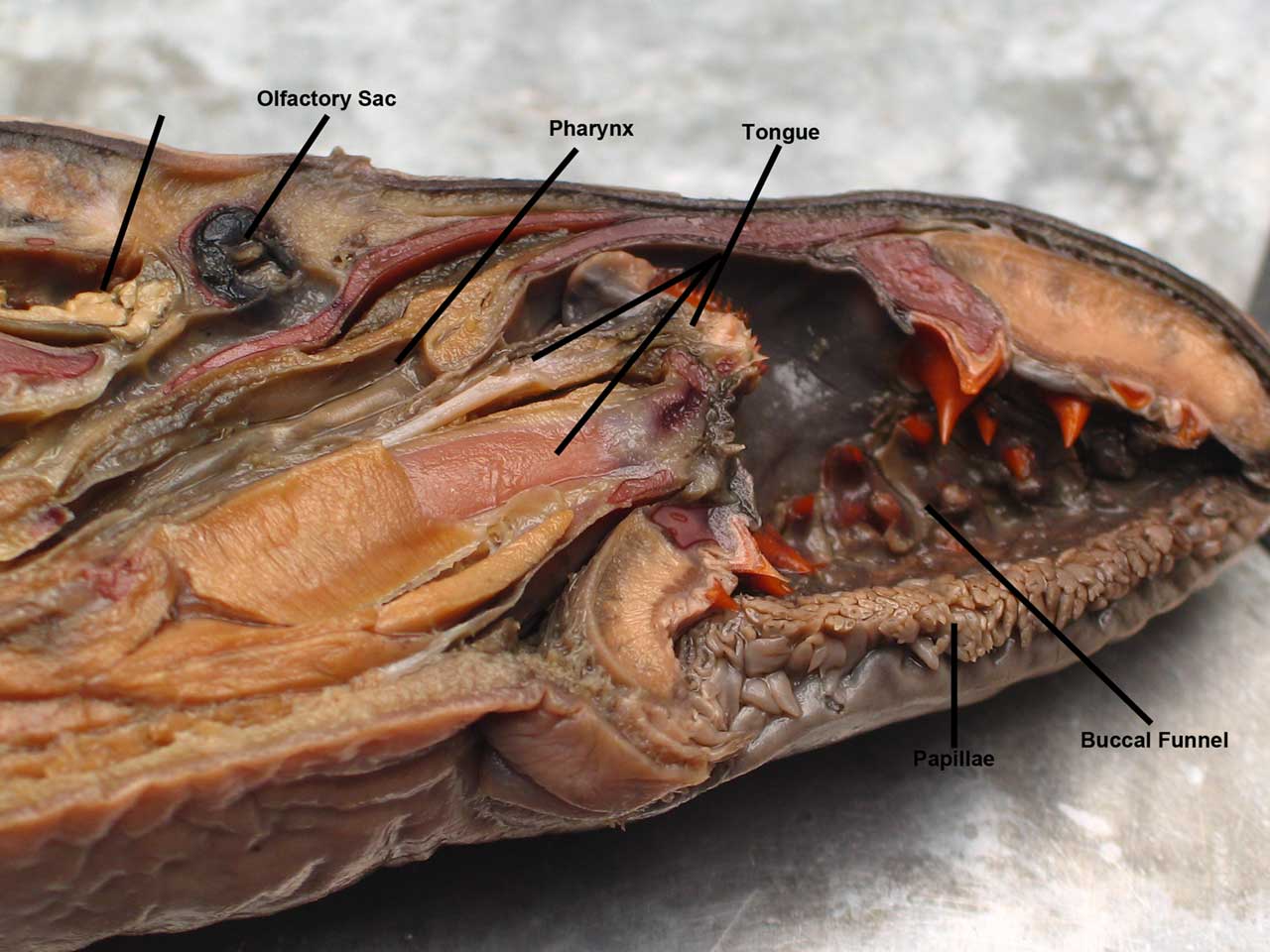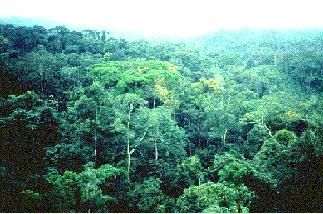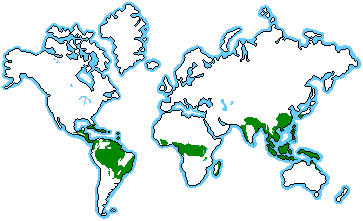Grassland biomes are large, rolling terrains of grasses, flowers and herbs. Latitude, soil and local climates for the most part determine what kinds of plants grow in a particular grassland. A grassland is a region where the average annual precipitation is great enough to support grasses, and in some areas a few trees. The precipitation is so eratic that drought and fire prevent large forests from growing. Grasses can survive fires because they grow from the bottom instead of the top. Their stems can grow again after being burned off. The soil of most grasslands is also too thin and dry for trees to survive. In America, the animals found are: American Bald Eagle, badger, bobcat, bumble bee, coyote, and prairie dog.
A tropical rain forest is a forest of tall trees in a region of year-round warmth. An average of 50 to 260 inches of rain falls yearly. Animals located in these regions are: Africa forest elephant, Bengal tiger, chimpanzee, common calm civet or musang, dawn bat, golden lion, tamarin, harpy eagle, Jambu fruit dove, king cobra, kinkajou, Linn's sloth, orangutan, proboscis monkey, red-shanked douc, langur, silvery gibbon, Slender Loris, sumatran rhinoceros, toco toucan, vampire bat, and Wagler's Pit Viper.
Rainforest

Grass Land

|
|























